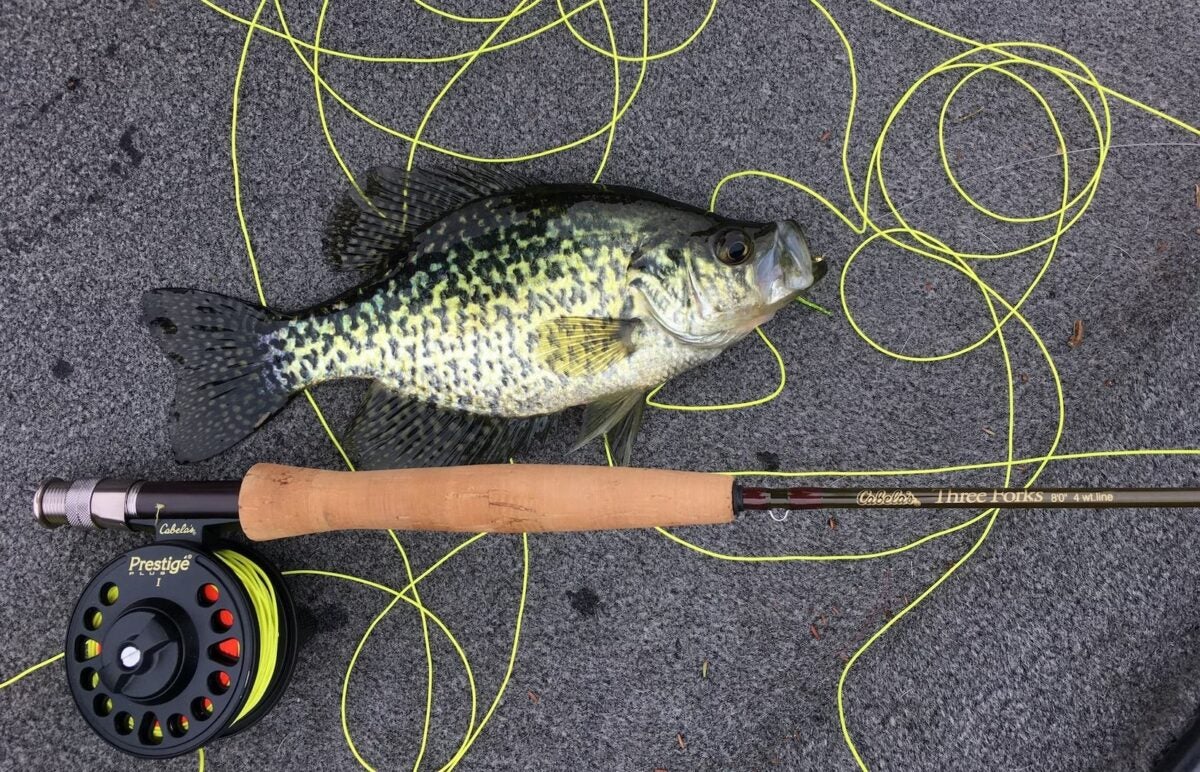Beginner’s Guide on How to Choose the BEST Fly Fishing Line
Travis Olander 06.21.23

Thought fly fishing line was just a simple piece of filament like any other type of fishing line? Wrong. Like we’ve covered in our other fly fishing guides, there’s plenty of technicality and complexity built into fly fishing line. The line plays an integral role in fly fishing — it does far more than just merely connecting the lure to the rod.
Why The Right Fly Fishing Line Matters
Like we covered in our Beginner’s Guide to Fly Fishing, it’s the line itself that governs the cast and presentation of the lure. And, unlike regular fishing line, fly line consists of four distinct components that must work together in harmony to provide accurate casting and good lure presentation. Those four components include:
- Backing – This is the line that remains spooled — until you catch a fish that puts up a good fight. Backing is only there to allow the fish to run once hooked, and it usually measures 20 to 30 pounds in strength. Backing isn’t ever cast; think of it as insurance.
- Fly line – The star of the show. The fly line is a piece of cored, coated line that provides even greater thickness than the backing. Fly line is weighted, but it’s also made to float. Typically, you’ll want 100 feet of fly line to work with while casting. The fly line attaches directly to the end of the backing.
- Leader – The leader is more akin to regular fishing line. It connects to the end of the fly line, and it’s made from clear monofilament. The leader sports a tapered shape. That means it gets thinner as it approaches its tip.
- Tippet – The tippet is made from monofilament, too. But it’s usually even thinner than the leader. That’s because the tippet connects the leader directly to your fly lure, so it needs to be difficult to spot by your target fish.
Getting the right combination of line, leader, and tippet is what stands between you and a successful day of fly fishing (in addition to, of course, the right lure).
Fly Fishing Line Cores and Coatings
The fly line’s core is the central line hidden within the thick coating. Cores are typically made from braided multifilaments or monofilaments. Cores can be solid or hollow, which can influence the line’s strength, stiffness, flotation, and stretch.
Monofilament cores are commonly used in warm water and saltwater, since they maintain strength and suppleness in those conditions. Multifilament cores perform better in cold water, as they coil and shrink less, and maintain better flexibility.
Fly line coatings determine whether a line floats or sinks. Coatings are either filled with tiny air pockets or tungsten powder to influence their tendency to float or sink.
Floating vs. Sinking Fly Lines
As a beginner, you’ll want to stick with a general-use, floating, weight-forward (more on that next), monofilament line. These lines are less likely to tangle, they’re easy to cast, and they make easy work of presenting dry flies, nymphs, and streamers with just one setup. As you get your waders wet and start to broaden your waters, you’ll want to consider a sinking line for those bug-snapping Bass, deep water Trout, and Steelheads and Salmon in swift water columns.
(Don’t Be Afraid of The Deep)
Beginner fly fishers think that successful fishing means getting Trout or Bass to break the water, leaping up to grab a dry fly. But that simply isn’t the case. Although predatory fish engage in topwater feeding, they spend most of their time underwater and cover, feeding occasionally, or not at all. That’s why you need to be willing to go below the surface, trading your dry flies for nymphs, streamers, and other underwater baits. This can be done in two ways.
- Floating Line – Grab a long leader with split shot. You can use floating fly line and still get bites underwater. Just throw some weight near the end of the leader — usually around 6 to 12 inches before the tippet. This technique works great for beginners prowling shallower depths (2 to 3 feet).
- Sinking Line – Using a sinking line requires a bit more finesse and knowledge. How do you know when you’ve bottomed out? You need to know the sink rate of your line. Sink rate describes how fast the line falls through the water, and it’s measured in inches per second. The most popular sinking lines are “intermediate,” and sink between 1/2″ to 1.5″ per second.
Sinking lines are further categorized into full-sinking or sinking-tips. As their names imply, full-sinking lines fall through the entire across their entire length. These are best for still waters and slow currents. Sinking-tip lines are weighted heavier toward the leader, allowing the farther end to sink more than the rest of the line. Sinking-tip lines are better in fast waters, as they allow for more control and mending the presentation through heavy currents.
Fly Fishing Line Tapers
Fly lines are almost never one, continuous shape from backing to leader. Instead, part of the line — usually nearer the leader — is shaped with a taper. Tapers usually measures 4 to 8 feet in length, and end about 6″ to 12″ before the tip, where the leader attaches. The taper adds mass and volume to the line, affecting the way it shoots and presents a lure.
Most modern fly lines are “weight-forward,” or “WF.” This means they have a large head near the tip that helps to increase aim and distance when casting. Weight-forward tapers are shaped and sized for particular setups, including specifically sized lures and even the species you’re targeting. There are over a dozen taper shapes, but let’s keep it simple: If you’re hunting Trout, buy an advertised Trout weight-forward line. If you want to hunt Bass, stick with a Bass line.

